The part of our garden that we call the bog isn't a bog in the traditional sense of the word - it's not an area with permanently moist, acidic peaty soil. Ours is an integral part of our big pond: water is continuously pumped from a skimmer alongside the main pond area up into the center of a rubber-lined volume of rocks and pebbles. There is a shallow water level above the top layer of pebbles, from which water flows back across a ford into the main pond. I'm not quite sure why the pond installer chose to refer to this feature as a bog, but the term has stuck. The pond was installed in 2006, the picture above was taken in 2009: plenty of time for the plantings to fill out, both in and around the area. The bog serves as a biological filter: leaves, algae, and other organic matter that arrives from the main pond gets hung up in the pebbly medium. Here, bacteria are hard at work, converting them into nutrients. Completing the job, the plants growing in the bog remove these nutrients from the water and use them to grow. By doing this, they keep the nutrient level in the pond low, which prevents algae from taking over. The gentle trickle across the ford aerates the water, which also improves water quality. And indeed, the difference between the water quality in our big pond and our original puddle pond is striking - near crystal clarity in the big pond, a mucky green soup in the little one. We're still trying to optimize the whole system, since string algae still bloom aplenty, waving in the clear currents.
The bog is a substantial feature all in itself - about ten foot long and eight foot wide. Because of the way our yard slopes, the bog sits above ground level, its walls constructed from soil excavated from the main pond. This means that not only did we get a new opportunity to grow plants in the bog, we also have a substantial new area of sloping soil around the bog to serve as brand-new plant borders. One edge runs along a narrow strip of lawn between the bog and our established side garden - a very pleasant place to stroll, making this a prime area for well-behaved plants. So far, we've placed a slow-growing Japanese maple a Meyer lilac, and a paperbark maple (all still tiny) in this area, along with various perennials and annuals, and several clumps of blue fescue grass along the length of the border. As happens with most of our garden areas, it didn't stay quite as sedate as intended, so I'll have to plan some editing in the near future.
The bog itself was originally planted by the company that installed the pond. Unfortunately, the bog sprang a leak in its first winter, so that the poor plants were exposed to dry freezing conditions - quite a few of them didn't survive. We've added new plants to fill in the gaps. Low plants grow in the front area nearest the ford, taller ones in the back. Just so it lives up to its name a little bit, I planted a couple of pitcher plants (true bog denizens!) along the edge as well. By now, the bog is a near-impenetrable mass of green by mid-summer, supporting the filtration capacity of the pond. Plants growing in our bog filter
Plants growing alongside our bog filterVisitors to this page have left the following comments
I welcome comments about my web pages; feel free to use the form below to leave feedback about this particular page. For the benefit of other visitors to these pages, I will list any relevant comments you leave, and if appropriate, I will update my page to correct mis-information. Note that I discard any comments including html markups, so please submit your comment as plain text. If you have a comment about the website as a whole, please leave it in my guestbook. If you have a question that needs a personal response, please e-mail me.
Last modified:
February 10, 2010 |
|||||||||||||||||||||||||||||||||||||||||
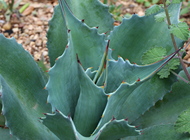
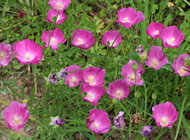
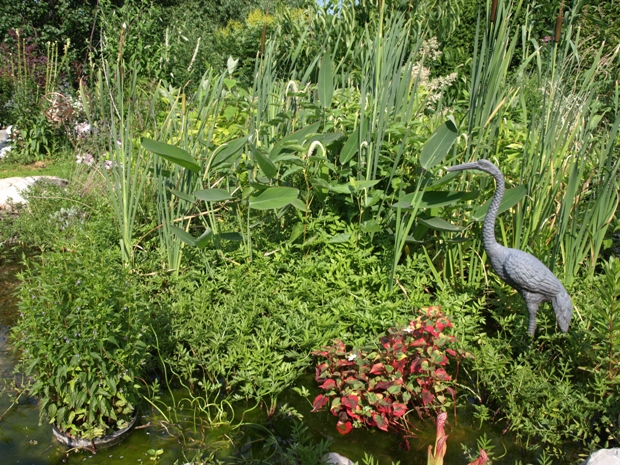
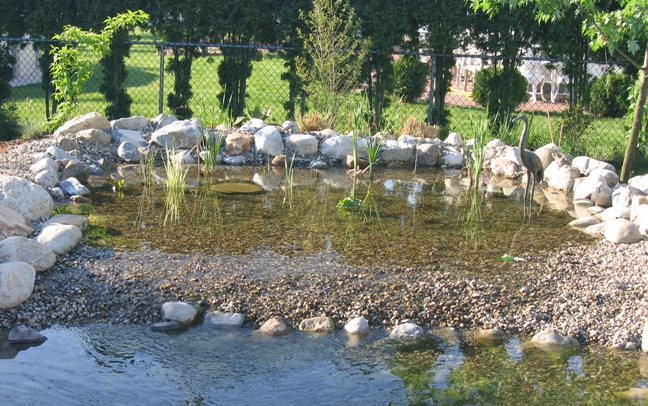
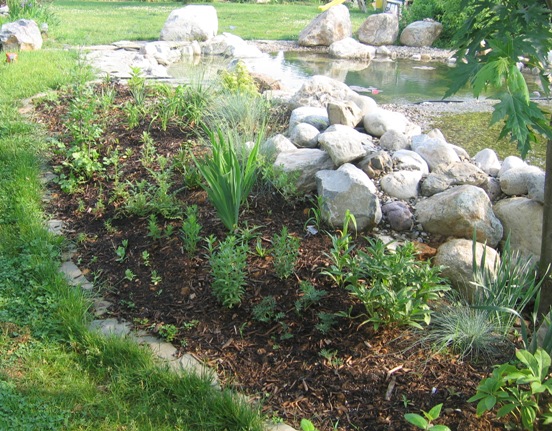
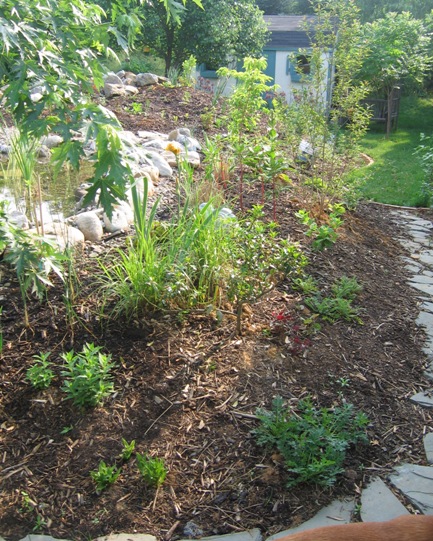 The other edge available for planting runs along the back of the bog,
just short of the chain-link fence dividing our neighbors' and our yards.
We're happy to hide that fence from view, so the back of the bog is planted
with taller plants - shrubs, ornamental grasses, taller perennials. The tall
arborvitae lining the neighbors' yard cast shade on this area for the first
half of the day, so we've also tucked in some plants that appreciate partly
shady conditions. At this time, we can still walk on the narrow path between
the bog and the fence, but as plants grow larger, this will cease to be
navigable.
The other edge available for planting runs along the back of the bog,
just short of the chain-link fence dividing our neighbors' and our yards.
We're happy to hide that fence from view, so the back of the bog is planted
with taller plants - shrubs, ornamental grasses, taller perennials. The tall
arborvitae lining the neighbors' yard cast shade on this area for the first
half of the day, so we've also tucked in some plants that appreciate partly
shady conditions. At this time, we can still walk on the narrow path between
the bog and the fence, but as plants grow larger, this will cease to be
navigable.